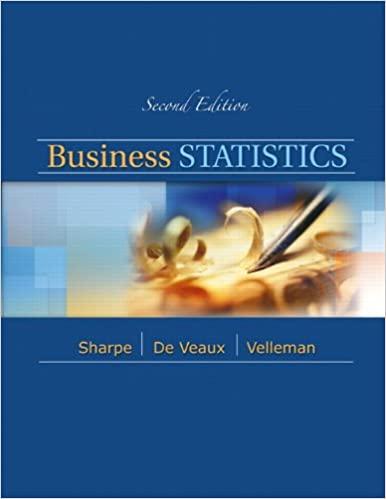Defining the survey. At its website (www.gallupworldpoll .com) the Gallup World Poll reports results of surveys conducted
Question:
Defining the survey. At its website (www.gallupworldpoll
.com) the Gallup World Poll reports results of surveys conducted in various places around the world. At the end of one of these reports, they describe their methods, including explanations such as the following:
Results are based on face-to-face interviews with randomly selected national samples of approximately 1000 adults, aged 15 and older, who live permanently in each of the 21 sub-Saharan African nations surveyed. Those countries include Angola (areas where land mines might be expected were excluded), Benin, Botswana, Burkina Faso, Cameroon, Ethiopia, Ghana, Kenya, Madagascar (areas where interviewers had to walk more than 20 kilometers from a road were excluded), Mali, Mozambique, Niger, Nigeria, Senegal, Sierra Leone, South Africa, Tanzania, Togo, Uganda (the area of activity of the Lord’s Resistance Army was excluded from the survey), Zambia, and Zimbabwe. . . . In all countries except Angola, Madagascar, and Uganda, the sample is representative of the entire population.
a) Gallup is interested in sub-Saharan Africa. What kind of survey design are they using?
b) Some of the countries surveyed have large populations.
(Nigeria is estimated to have about 130 million people.)
Some are quite small. (Togo’s population is estimated at 5.4 million.) Nonetheless, Gallup sampled 1000 adults in each country. How does this affect the precision of its estimates for these countries?
23–30. Survey details. For the following reports about statistical studies, identify the following items (if possible). If you can’t tell, then say so—this often happens when we read about a survey.
a) The population
b) The population parameter of interest
c) The sampling frame
d) The sample
e) The sampling method, including whether or not randomization was employed
f) Any potential sources of bias you can detect and any problems you see in generalizing to the population of interest
Step by Step Answer:

Business Statistics
ISBN: 9780321716095
2nd Edition
Authors: Norean D. Sharpe, Paul F. Velleman, David Bock, Norean Radke Sharpe






